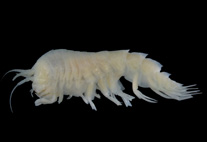Abstract
The karyotype, larval and pupal morphology of Macropelopia nebulosa group (Tanypodinae) is described. The species is generally identified on the basis of pupal morphology as it is not possible to distinguish the larvae of different Macropelopia species. However, the species has species-specific markers in the salivary gland chromosomes which allow identification at the larval stage. M. nebulosa (Meigen) has a chromosome set 2n = 8, with chromosomes AB CD EF G. Chromosomes AB CD EF are metacentric with large heterochromatin centromeres while chromosome G is acrocentric. For the first time a chromosome map of M. nebulosa has been produced which revealed the divergence of this species from its sibling species M. paranebulosa Fittkau on the basis of fixed homozygous inversions. Specific banding patterns of arms B and E are distinguished from that of M. paranebulosa by two steps of homozygous inversions; arm D—by three steps of homozygous inversions, while arms C and G—by one step of inversion. The significance of the morphology of the salivary gland chromosomes for species identification of subfamily Tanypodinae is emphasized. The first SEM images of pupa are also given.

